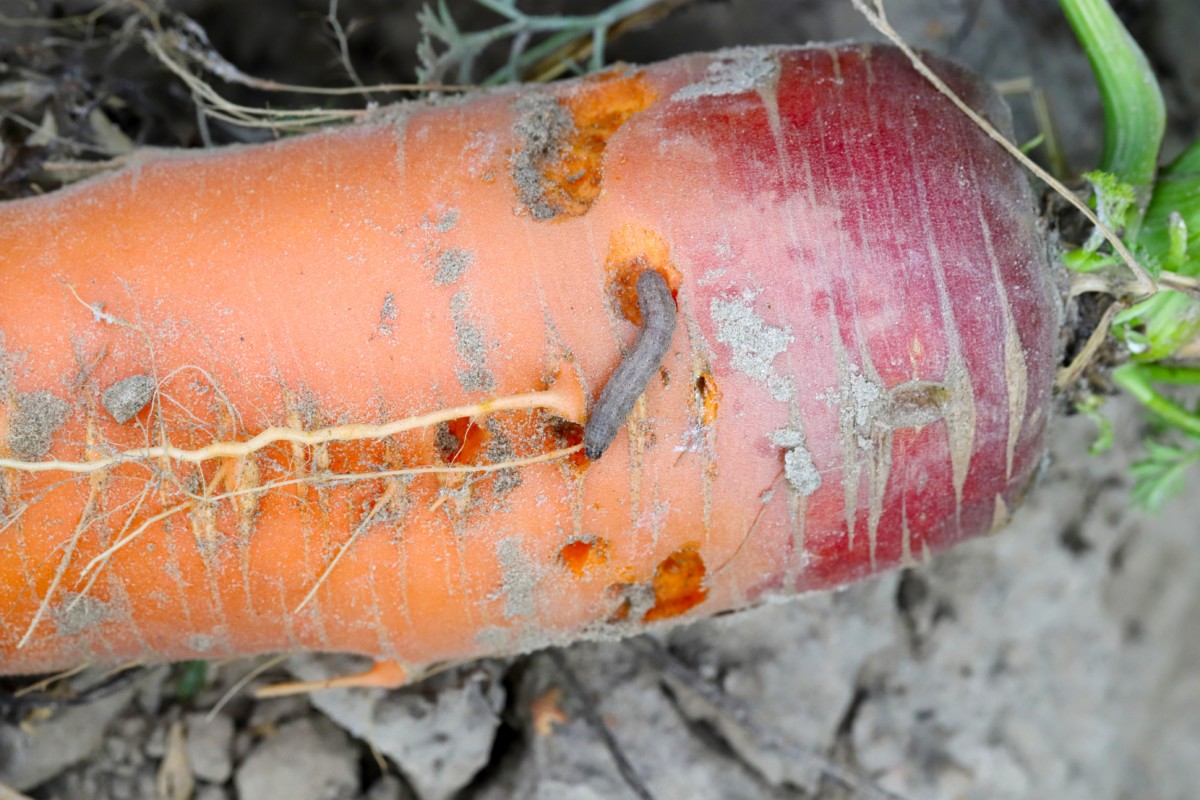
If you’ve never had a carrot fresh from the garden, you really don’t know what you’re missing!
The sweetness and crunch of a fresh carrot can’t be beat, and when they come in so many fun colors, it’s no wonder this garden veggie is a favorite.
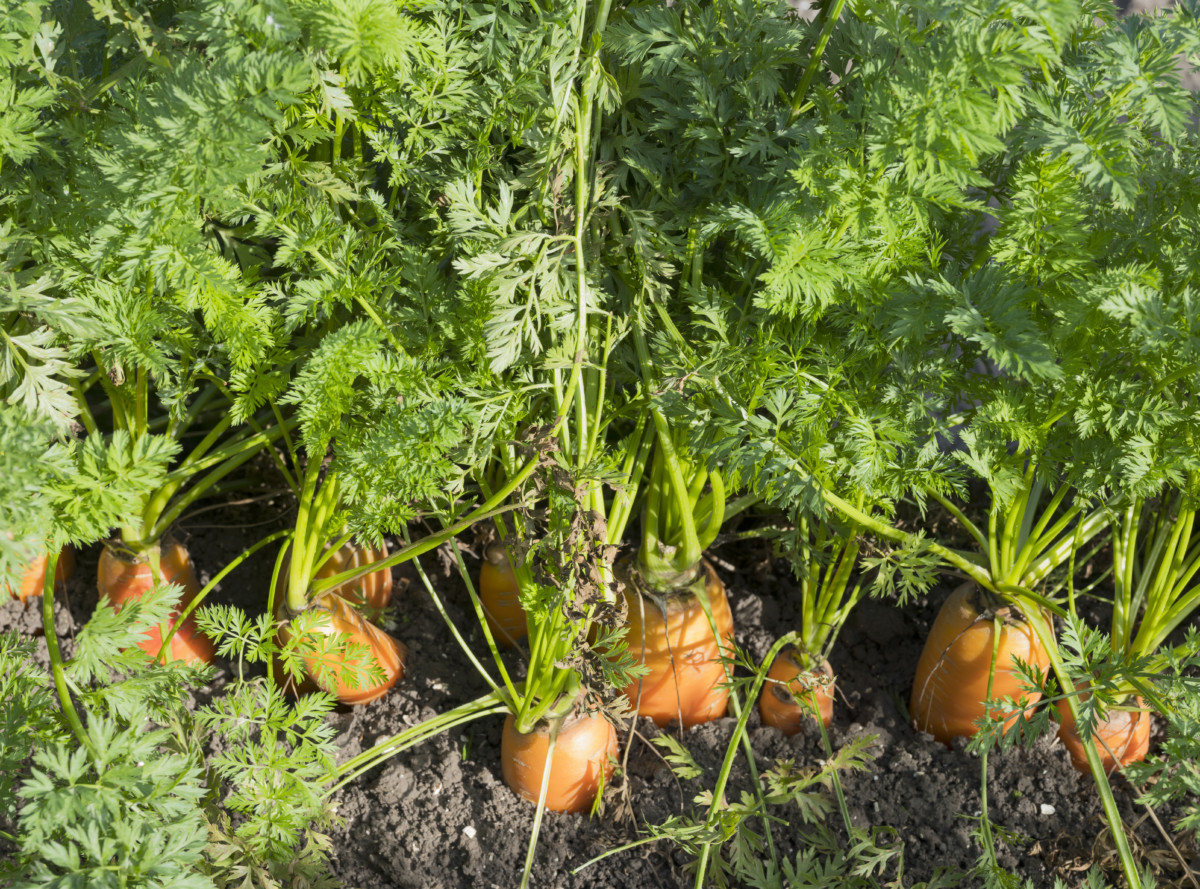
Carrots are quite easy to grow and can be grown successfully in practically any backyard garden. Some people even grow them in planters on patios and balconies.
The problem is that carrots can be decimated by a number of insect pests. Some of these pests attack the leaf, and some eat the root, but either way, these problem pests could be the end of your carrot crop if you don’t take the time to prevent and treat them.
4 Ways to Prevent Carrot Pests
1. Till in the Fall
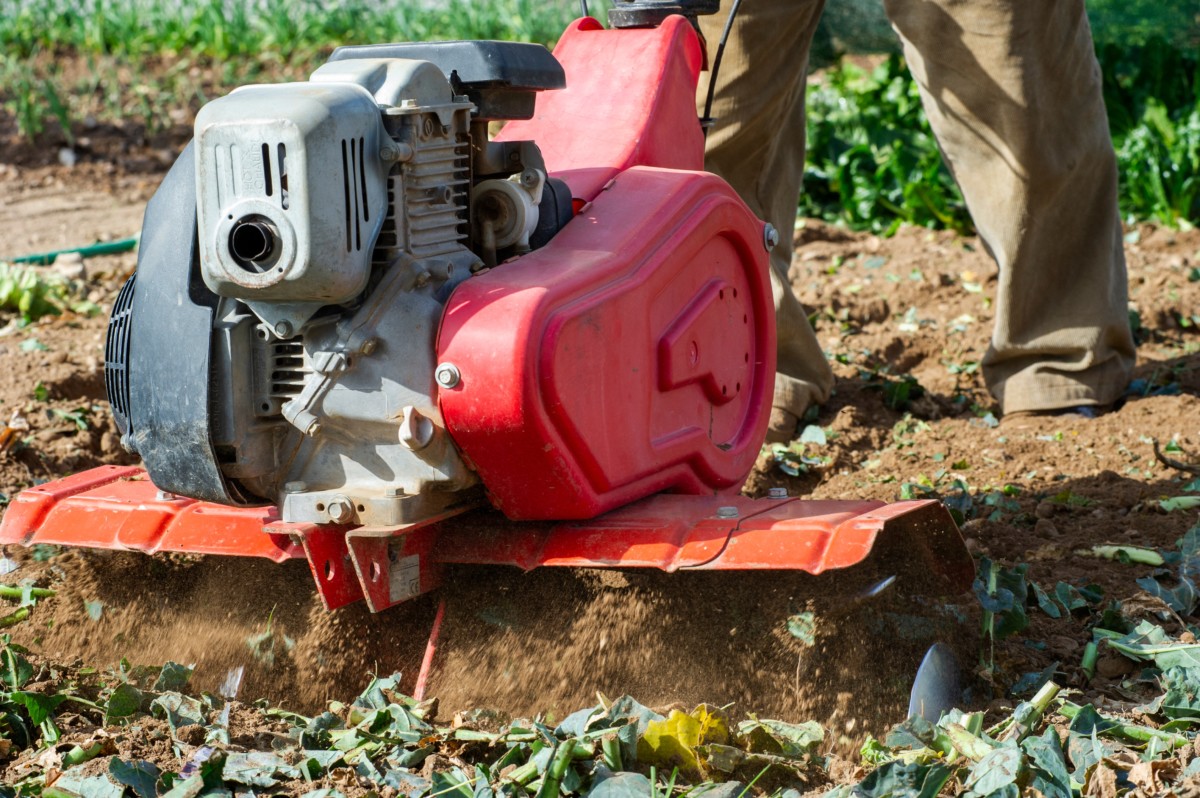
A lot of the insect pests that attack carrots lay their eggs or go dormant in the soil over the winter, then attack when spring and summer hit. In order to avoid this, it pays to spend some time cleaning up your garden in the fall and getting rid of as many of them as you can.
When it’s time to put the garden to bed, make time to clean out all spent plants from the garden and put them in the compost pile. Till the soil and leave it open for local wildlife to eat the pests and their eggs. Birds and small rodents will be happy for the treat, and they’ll help you prevent pest issues in the spring.
If you have chickens, ducks, or guinea hens, this is the perfect time to let them into the garden so they can feast on the pests and weed seeds in the soil.
2. Put in Plants that Draw Beneficial Insects
Not all insects are bad, in fact, many of them are wonderful for your garden because they eat destructive insects. Bugs like ladybugs, lacewings, and parasitic wasps are great deterrents for other pests that will eat your carrot crop. They’re attracted to gardens that are full of flowers, as they not only eat pest insects, they feast on nectar too.
Draw these bugs to your garden naturally by planting the following:
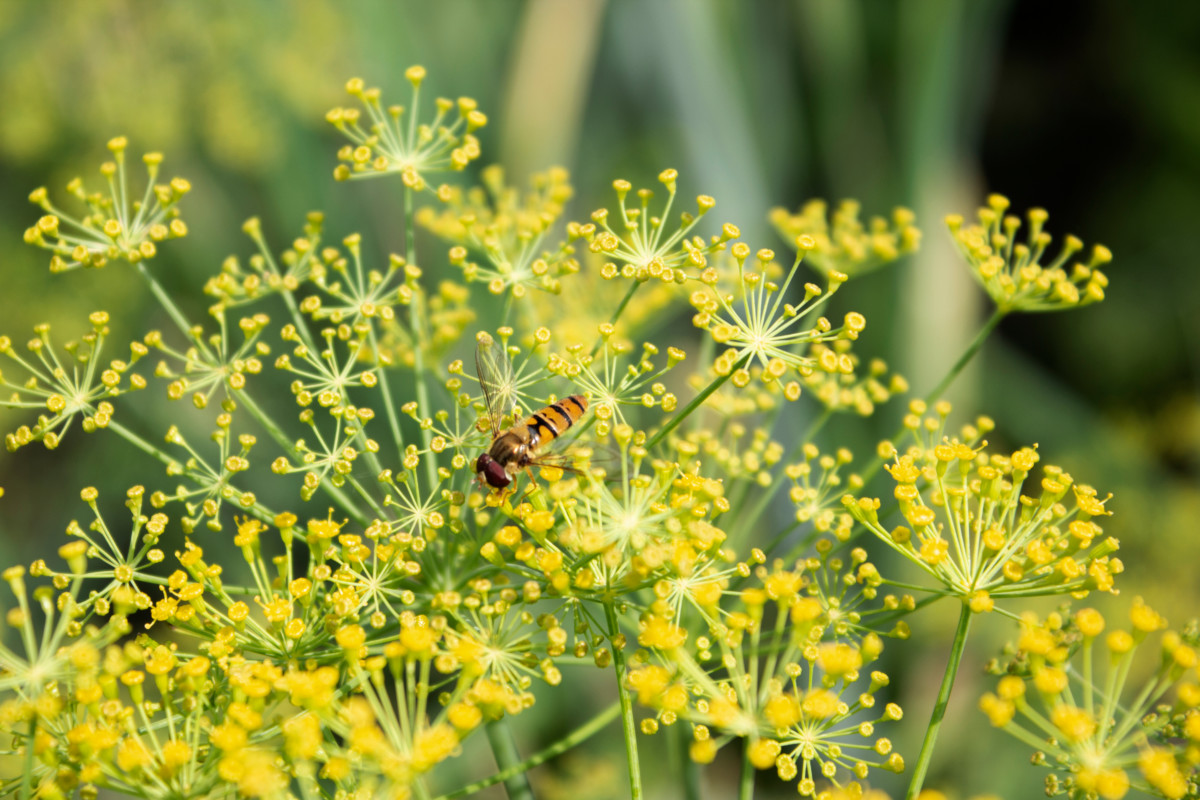
- Buckwheat
- Sunflower
- Yarrow
- Dill
- Black-eyed Susans
- Cosmos
- Marigold
- Coneflower/ Echinacea
- Mint
- Borage
- Chamomile
- Nasturtiums
Note: Don’t buy insects and release them into your garden. It may seem like an easy fix for a pest problem, but can lead to other problems. A lot of the insects you can buy online are not native to your region, and introducing them to your garden and surrounding habitat can be dangerous for your local ecosystem. It’s better to focus on drawing the beneficial insects already living in your area to your garden.
3. Insert Floating Row Covers
Sometimes the best way to prevent pests from eating your carrots is to physically keep them out of your garden. Row covers are a great way to keep space between your precious plants and insect pests.
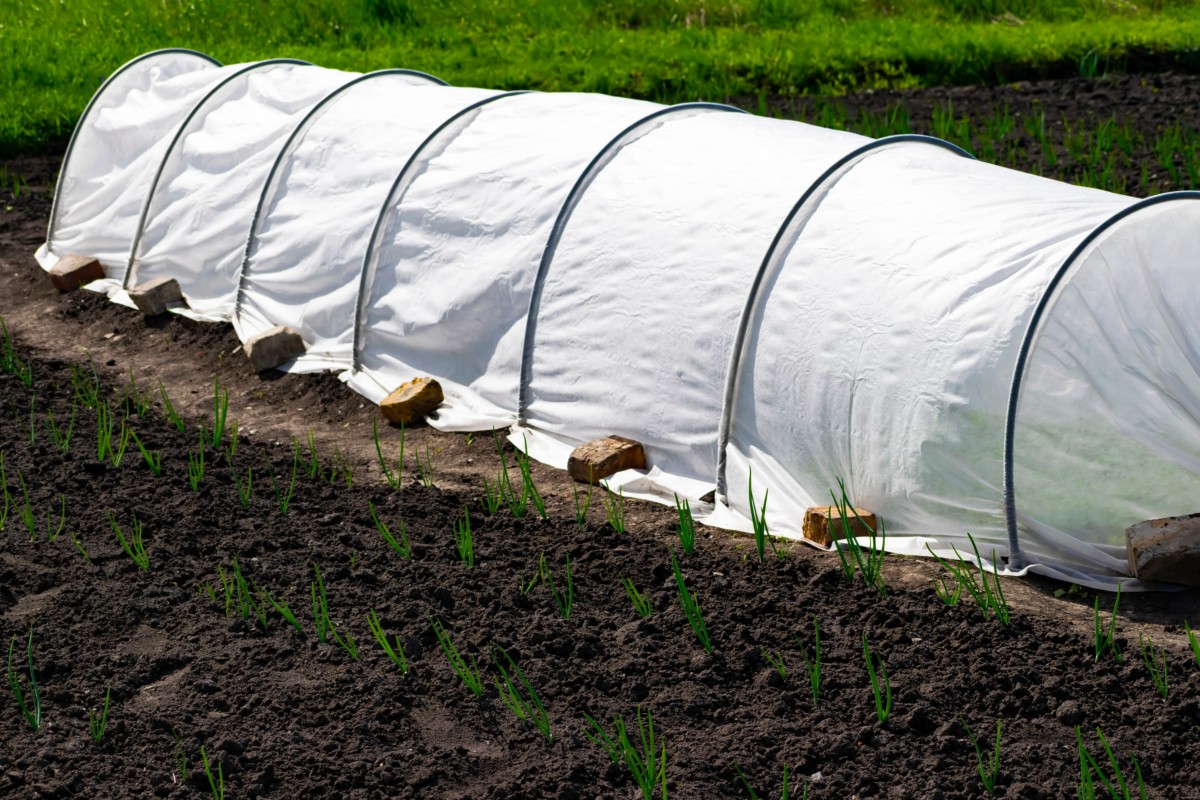
Floating row covers are usually made with wire hoops and lightweight fabric or plastic that is loosely draped over your crops. If you put row cover in, make sure it’s secured all the way down to the soil, as many carrot pests attack from the ground.
Make sure you leave vegetables that require pollination via insects uncovered.
4. Practice Companion Planting
Companion planting is one of the best ways to naturally and organically protect your crops against pests and disease.
Planting carrots with aromatic crops can help to prevent pests because many of them seek out the carrots through their sense of smell, like the carrot fly.
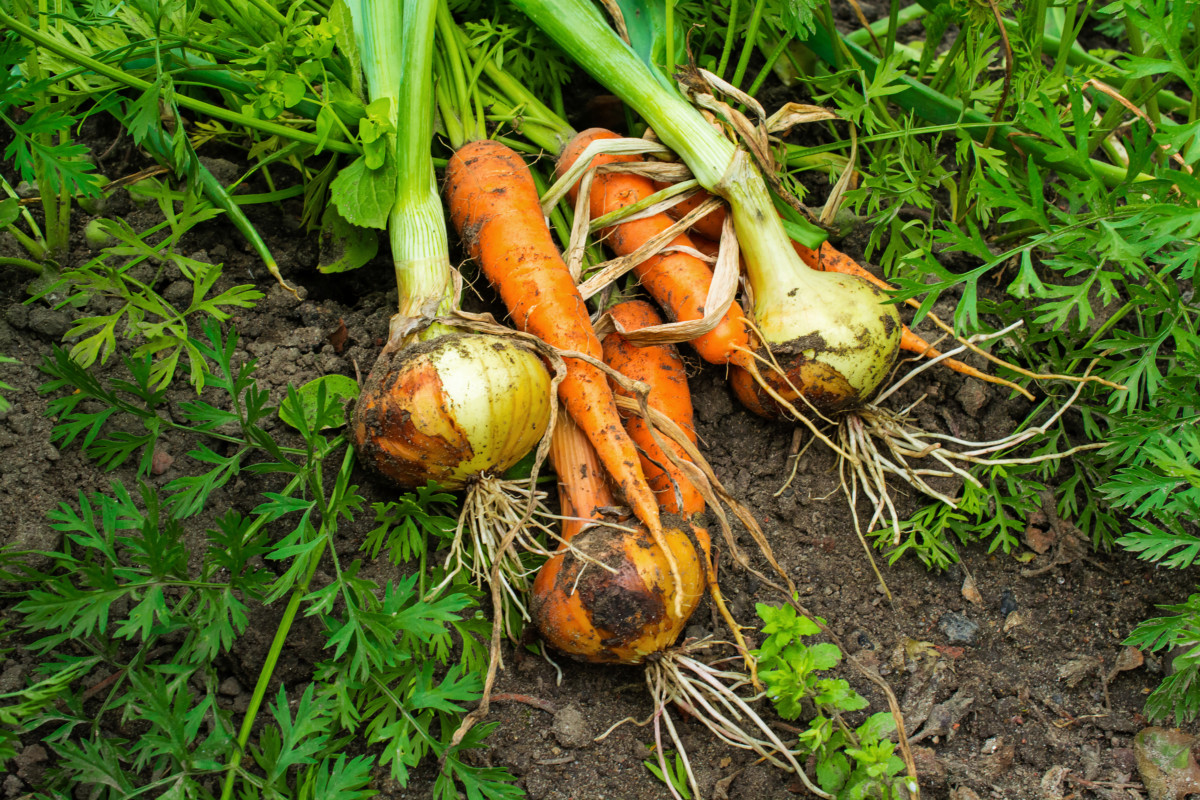
Plant these crops with carrots:
- Mint – beware mint can spread like weeds, but Cheryl shows you how to grow mint so it won’t take over.
- Onion
- Leeks
- Parsley
- Sage
- Rosemary
- Chives
- Nasturtiums
Common Carrot Pests
So now we know how to prevent carrot pests from becoming a problem, but what if you already have an infestation?
The first step is identifying which pest is attacking your crop, then you can form a targeted attack against them.
There are a number of insect pests that specifically target carrots and other root vegetables. Check out the list below to see what may be attacking your crop.
1. Cutworms
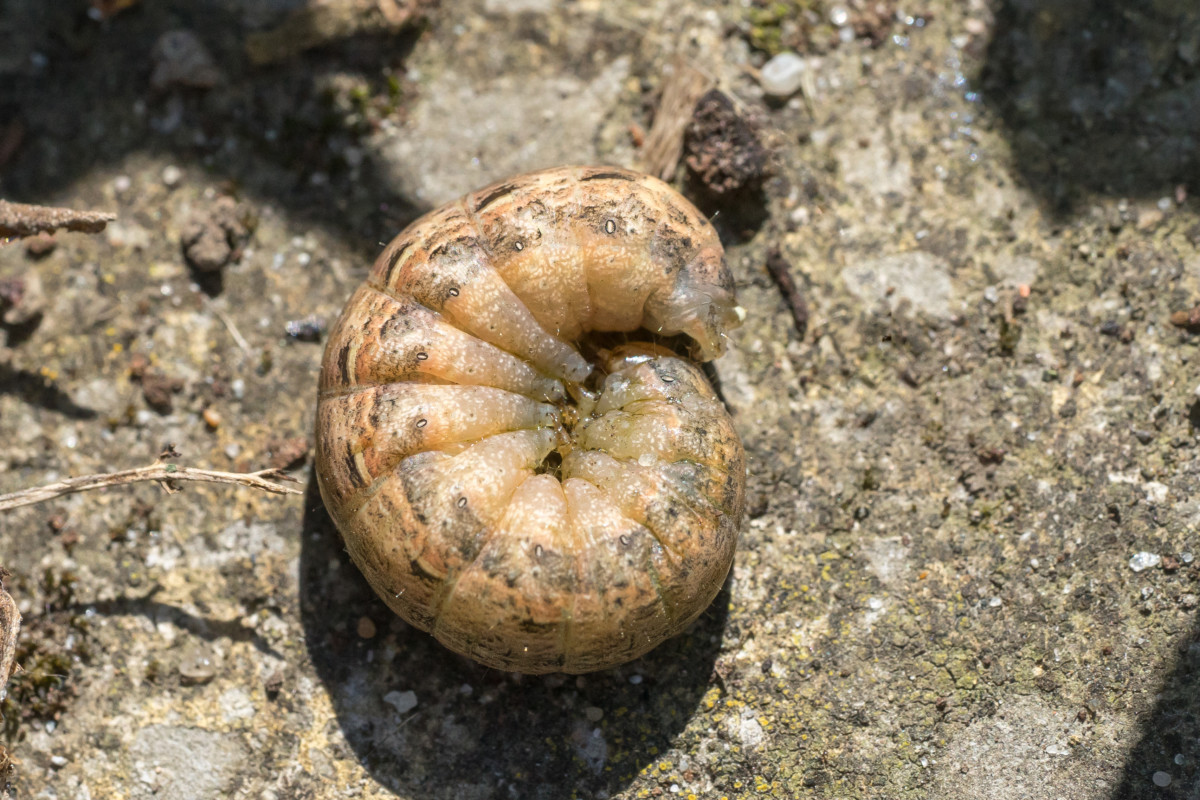
Cutworms are a very common garden pest and can attack all sorts of vegetables. These worms roll into a C shape when bothered and can come in all sorts of colors, from green to brown, to black or gray.
Cutworms attack by feeding on the stem, which cuts the plant at the soil surface, killing it.
If you suspect cutworms are attacking your carrots, look for them in the afternoon and evening. Run your gloved hands along the soil around your carrots, if any cutworms are present, they’ll roll into a tight ‘C’ shape and you can easily dispose of them in soapy water.
Removing all weeds in the garden and feeding your plants with compost instead of manure will also help to keep cutworms at bay. If you have a major infestation, you can also place collars around your carrot plants using foil or cardboard to prevent future attacks.
2. Aphids
Aphids tend to attack tender young carrot plants and are particularly bad because not only can they kill your carrots by eating them, they can transmit diseases to your crop too.
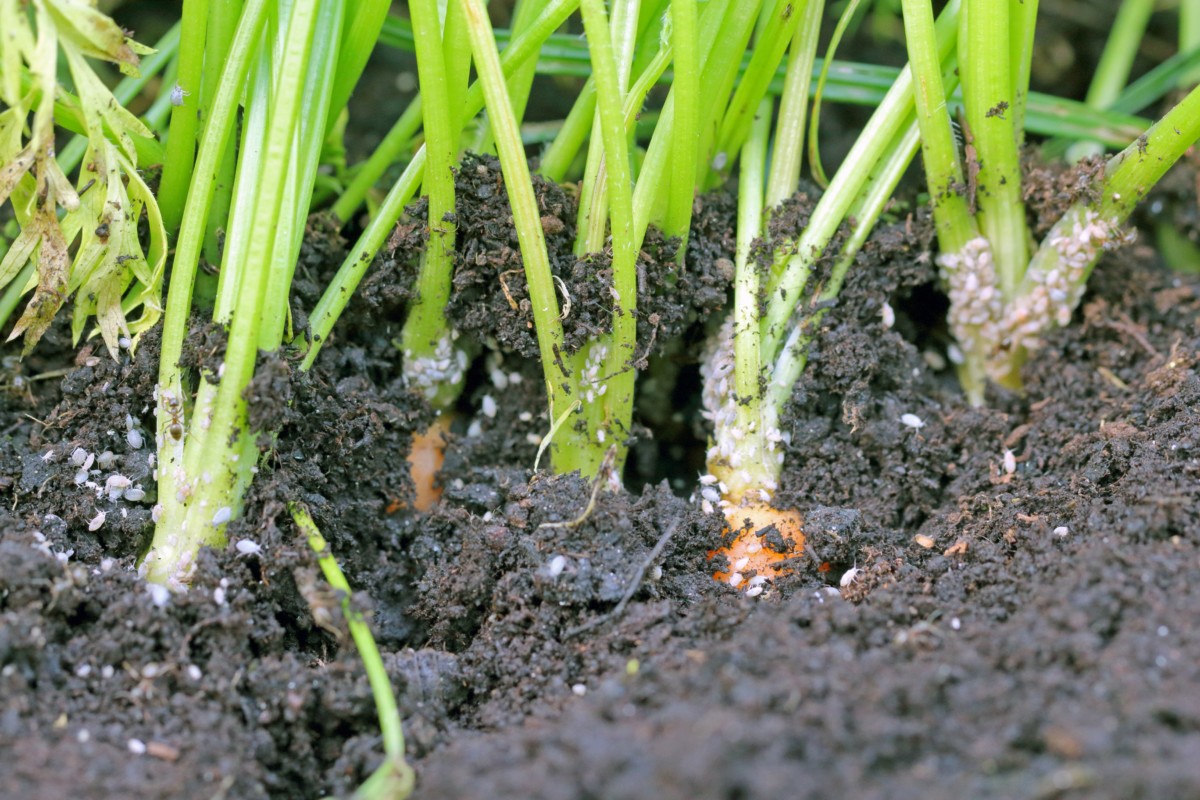
Aphids are relatively easy to control by spraying them off the plant with a jet of water. You may need to repeat this several times to get them to move on, but it does work well. If your carrots are seriously infested with aphids, or water isn’t deterring them, you can spray gently with neem oil, and spray the soil surrounding the plant too.
3. Carrot Rust Fly
The carrot rust fly is one of the biggest dangers to your carrot crop, as they’re a widespread problem and can cause enormous damage. The adult fly isn’t an issue for your carrots, but the larva of this fly love to tunnel into carrots, leaving a rust-colored hole. These insects also target celery, celeriac, parsnips, and parsley.
Carrot rust flies can attack in the spring and in the fall, making not only your vulnerable young carrots susceptible but your fully grown carrots as well.
One effective way to figure out if your carrots are being attacked by the rust fly is to place yellow sticky traps at the soil level in the early spring. Check them weekly and if you see adult rust flies on the cards, it’s time to act. Another easy way to kill carrot rust fly is to use neem oil.
To prevent them from attacking your crops you can use row covers or barriers. Floating row covers are one of the best ways to prevent attacks.
It’s also smart to practice crop rotation as well as companion planting to keep this pest at bay.
4. Carrot Weevils
Carrot weevils are beetles that love to eat carrots, celery, and parsley. The adults eat the carrot leaves and lay eggs in the roots, where their larva eat their way through the tuber, ruining the crop.
It’s important to practice crop rotation to keep carrot weevils from becoming a problem because they overwinter in the soil and then attack again the next year.
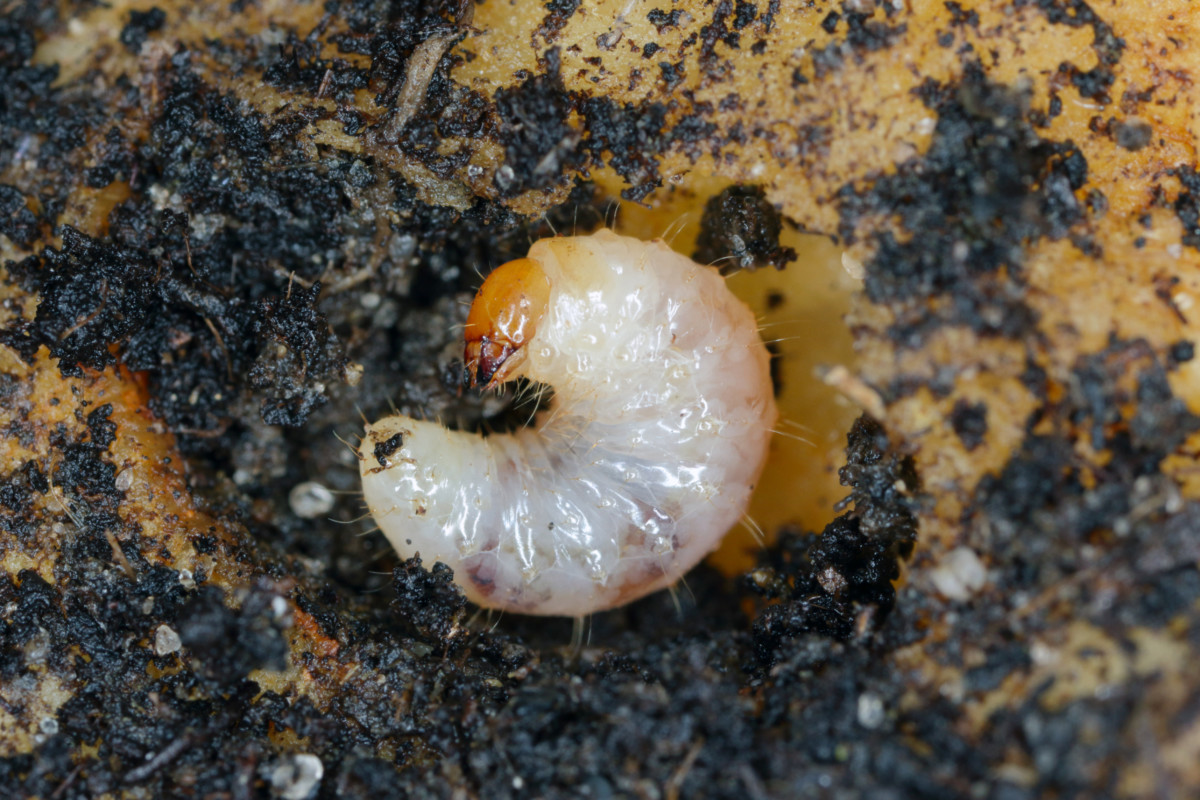
If you’re struggling with carrot weevils, you can set traps to catch the larva and then dispose of them. Put a cut carrot in the bottom of a jar, then poke holes into a paper cup and place this in the top of the jar. Bury the jar near your carrot crop so the top of the paper cup is at the soil level. Check the trap daily and kill any pests inside with soapy water.
You can also spray the larva with neem oil to kill them off.
5. Wireworms
Wireworms are well known for destroying their fair share of garden plants. They tunnel into the stems and roots of plants, eating them from the inside out. Unfortunately, these pests love eating carrots, and even worse, they can remain in the soil for up to five years, wreaking havoc year after year.
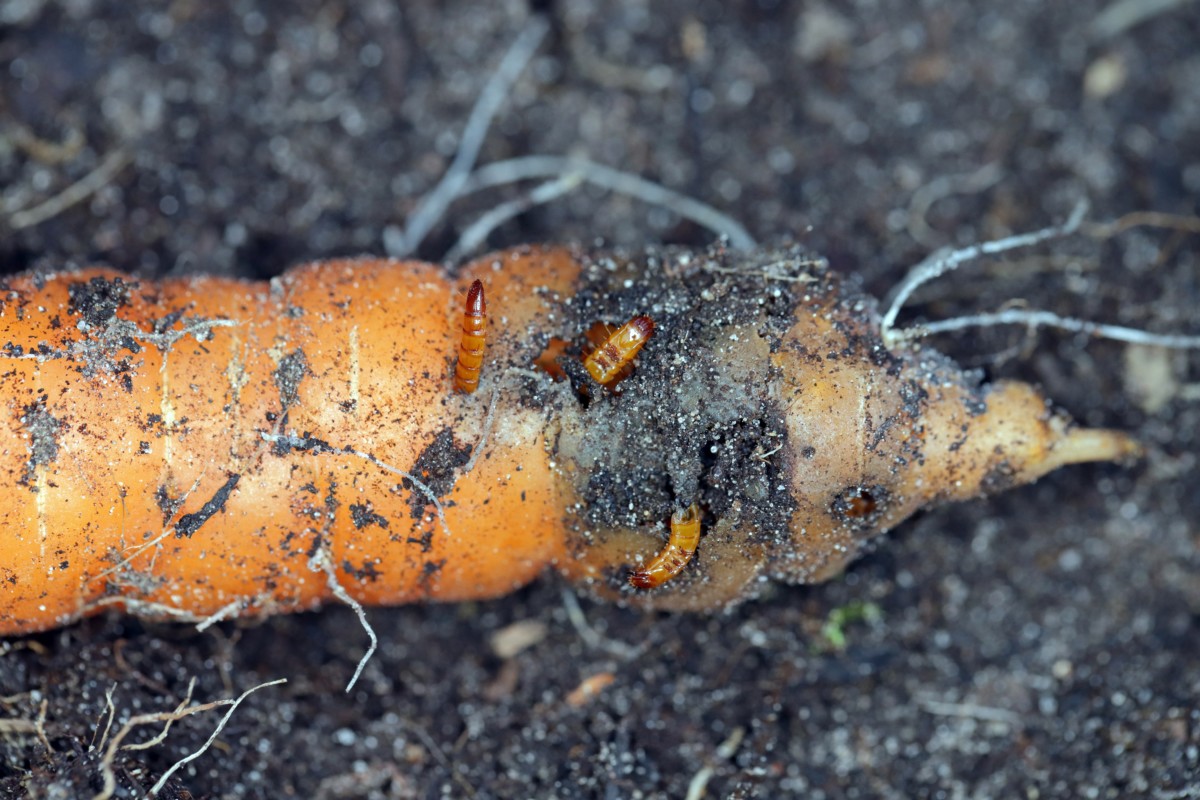
Rotating your carrot crop every year will help cut down on problems with wireworms.
You can also set a trap to kill these worms, and you can do so with carrots! Stick a fully grown carrot into the soil (you can use one from the supermarket) placing them every 2 feet. Every few days, pull up the carrot, scrape the worms off into a cup of soapy water, and put the carrot back into the soil. Keep repeating this process until you have no more troubles with wireworms.
Set board traps for wireworms and slugs
Board traps are easy, cheap, and effective way to get rid of a number of garden pests. They work well to capture wireworms and also work well for slugs. While slugs aren’t a big threat to carrots, they will decimate many other plants in your vegetable garden, so getting rid of them when you find them is key. This process allows you to kill two bugs with one board.
To set board traps simply lay down wooden boards (any size) in between your plant rows in the evening. The next morning pick up the boards and if any wireworms or other pests are attached to them, pluck them off and either relocate them or easily dispose of them by putting them in a cup filled with soapy water.
6. Celery worms/ Carrot caterpillar
This caterpillar is the larva of the black swallowtail butterfly and commonly eats celery, carrot tops, and parsley tops. Butterflies are wonderful pollinators for your garden, and while you do want them to visit in their mature state, you don’t want them eating all your crops in their larval stage. The best way to deal with carrot caterpillars is to handpick them and relocate them to somewhere other than your vegetable garden.
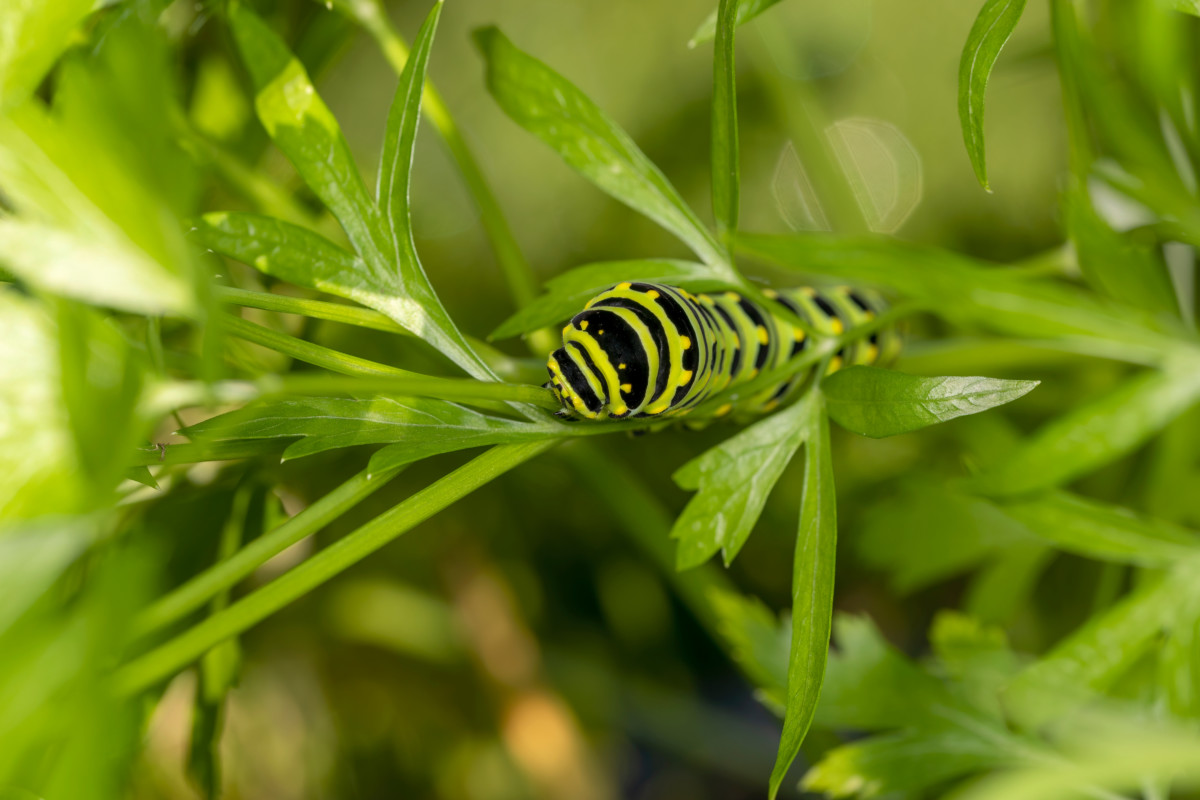
While the list of pests that can attack your carrot crop is practically endless, the ones covered here are the most likely you’ll deal with. Now that you have the tools and knowledge you need, you can get rid of your carrot pests this week.
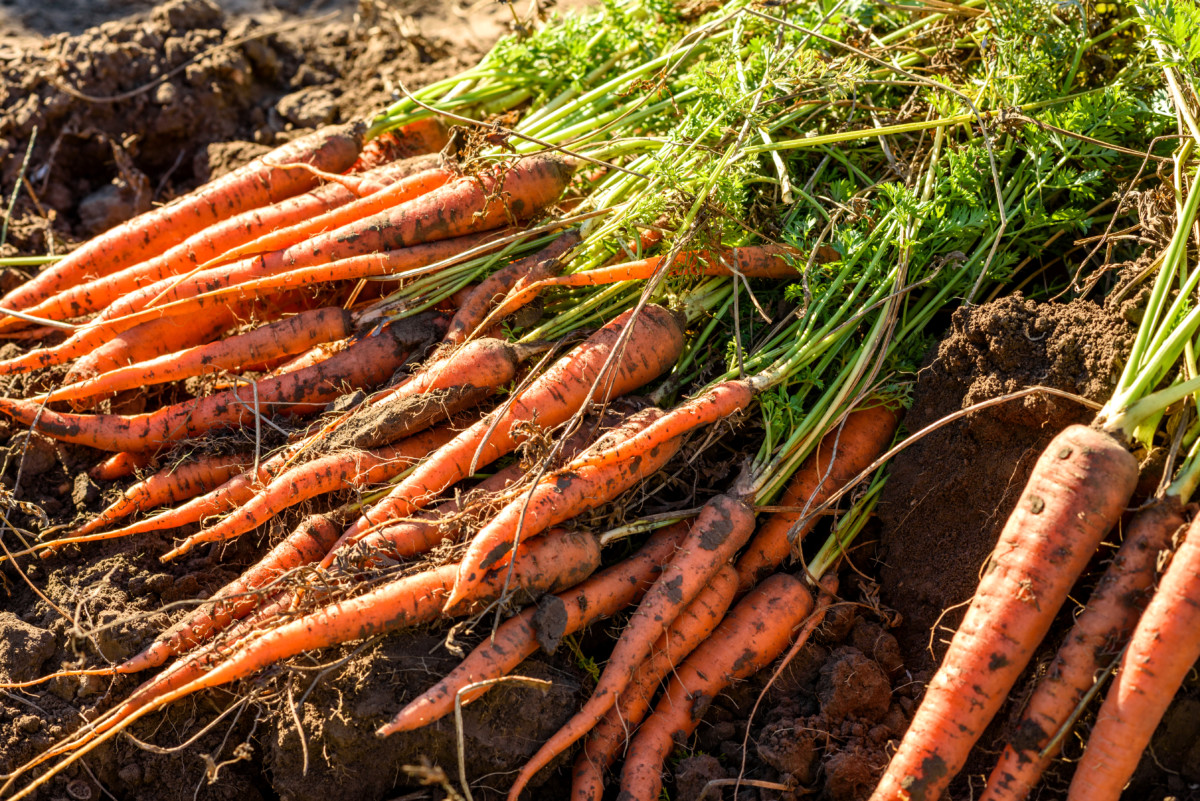
Remember, if you’re having trouble with pests this year, make sure you not only treat the pests but work to prevent them from coming back next year too. That way, every year’s carrot crop will just get better and better.

Get the famous Rural Sprout newsletter delivered to your inbox.
Join the 50,000+ gardeners who get timely gardening tutorials, tips and tasks delivered direct to their inbox.

